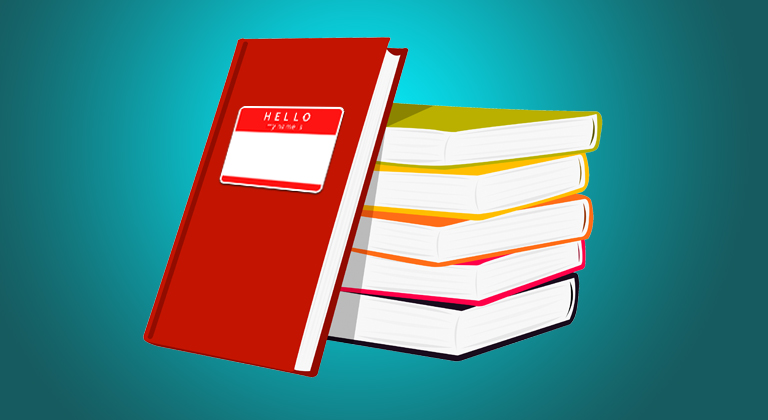A History of Kindle Unlimited
I was editing an article a few weeks ago, and there were some references to Kindle Unlimited and its various iterations. For the purposes of fact checking, I went looking for an article that summed everything up for me but failed to find anything. I did find some blogs and references that discussed specific changes from one version of KU to another, but nothing that really laid the entire history out all in one place. So I discussed it with Ginger and we decided it would be worth putting something together.
Of course, knowing how KU worked in the past doesn’t change how it works now, but there are probably some newer authors out there that are interested in reading about how the program evolved, and why. And for those of you that lived through it, you may still want to take a nostalgic trip down memory lane…
In 2014, Amazon introduced Kindle Unlimited – a kind of ‘Netflix for books’ which allowed subscribers to download and read as many books as they wanted for just $10 a month. The best part? This program also paid authors!
Six years later, however, the way authors got paid for participating in Kindle Unlimited has changed drastically – and over the course of those years, the way Amazon transformed the compensation model has dramatically altered the way authors approach being successful.
If you’ve heard talk on author forums about “KU 1.0” and its later iterations, but aren’t quite sure what the exact differences between them are, we’ve prepared a brief “cheat sheet” for you; which might help you better understand how this all started, and why it’s gotten to where it is right now.
The Introduction of Kindle Unlimited – KU 1.0
In 2014, Amazon introduced the now-familiar program called Kindle Unlimited. For $10, Amazon customers could subscribe to this program and have the option of ‘borrowing’ an unlimited number of books every month, as long as the authors of those books had made their titles exclusive to Amazon through the KDP Select program.
There were restrictions, of course. Readers could borrow a maximum of ten books at any one time – although downloading a new one for free was as easy as ‘returning’ a previously-borrowed title.
Authors, on the other hand, would receive a percentage of that month’s KDP Select Global Fund (I imagine it like it was a big pit of money that Jeff Bezos threw everybody’s monthly subscription into) based on the number of times their books were borrowed.
The fact that authors didn’t know how much they’d receive until after the fact was kind of a new thing – I’d describe it similarly to how pirates earned “pieces of eight” from the loot of each raid they’d participated in, but that makes it sound WAY cooler than it actually was!
Instead, it was more like a big communal pool that got divided up by collective subscription payments (minus Amazon’s percentage) divided by number of borrows.
The more books got borrowed each month, the smaller the share each author would receive – and with the fund starting off around $2.5 million in July 2014, this quickly lead to Amazon subsidizing the program with their own cash (for example, in August 2014, they paid $500,000 into the KDP Select Global Fund to keep author’s earnings higher.)
However, the increased number of Kindle Unlimited subscribers (or, more accurately, their subscription money) soon balanced that out and kept the payout for each book that was borrowed at roughly around $2 a title.
For indie authors, the downside was that being part of KDP Select meant that you had to pull all your books from other sites and vendors and make them exclusive to Amazon for a 90-day period, with the option to renew at the end. This meant you’d be sacrificing all the income you might get from Barnes & Noble, Apple Books, and Smashwords.
However, the benefit was a super-easy way of getting a new revenue stream – generally higher than you’d receive by having your books ‘wide’ – plus access to exclusive promotional tools like a 5-day Free Promotion; in which you could give your book away for free (and rack up huge earnings thanks to the spike in visibility this lead to.)
The rumble of complaints
Within a few months of KDP Select being launched, some of the issues with the original program started to make themselves apparent. The biggest was the fact that KU 1.0 (as it later became known) paid all authors equally based on each individual book that was borrowed. That meant borrowing a 5,000 word erotic short story would pay as much as somebody borrowing a 150,000 epic fantasy saga.
This instantly changed the ecosystem on Amazon – with money-hungry authors turning their attention to short stories, novellas, and anything they could pump out quickly, and in volume. At this point in my own writing career, I was focusing on writing 10,000 word erotic novellas, so I saw my earnings reach a peak that I’d never experienced before. I was stoked!
But this was clearly unfair to authors offering novel-length books, since a 50,000 word novel takes a significantly longer time to write than a 5,000 word short story. It also saw the rise of a ton of scams. Click farms in India and China would create dozens of Amazon accounts and enroll in Kindle Unlimited, then borrow dozens of their own books to score an unfair share of the communal fund payout.
Amazon first responded by insisting that at least 10% of the book needed to be read before authors would be eligible for a payout on that borrow – but when that failed to correct the issue, they introduced something else entirely.
The birth of KU 2.0
In February of 2016, buckling under complaints from indie authors, Amazon introduced what they called KENPC v2.0. This was a totally new system for paying authors who participated in Kindle Unlimited – offering payouts based on the number of pages a borrower would read, instead of a flat percentage for each book offered.
With the number of Kindle Unlimited subscribers continuing to increase, this changed the playing field entirely. Suddenly, a 600-page epic fantasy novel would pay out five times what a 50-page erotic short would; meaning authors who focused on novels and longer books finally got a more equitable payout.
It also meant the churn of shorts slowly ceased, as money-hungry authors realized that the payout for a 50-page short was no longer worth the effort of writing them. Enterprising little buggers that they are, though, they soon found a new approach to maximizing their payouts.
Amazon’s system of determining payments was based on what they’d call the Kindle Edition Normalized Page Count (KENPC). This was how many pages they considered a book to be. Every page that was read from a borrowed book paid out roughly $0.005 cents to the author – so a 400-page book would pay out roughly $2 if it was read in its entirety. For authors who wrote novels, this was largely the same as they’d have received for a borrowed book under KU 1.0, and even more if their books were longer!
But two issues immediately arose. The first was how Amazon determined how many pages of a book had been read. It turned out to be as simple as the highest of the ‘last pages opened’ in a reader’s Kindle – meaning that readers who skipped straight to the last page of a 400-page novel would be paying their authors the same as a reader who diligently read each and every word.
The second issue was that authors didn’t have the same limitations as they did with a paperback version of their book, and could add as many additional pages after the end of the book to ‘stuff’ the number of pages each borrowed title ended up being calculated as.
This led to unscrupulous authors coming up with elaborate schemes to get readers to tap an anchor link which would immediately take them to the end of a book (sometimes an offer like “win a free Kindle!”)
When you combined all of these things together, ‘stuffing’ a title with additional pages – sometimes multiple, complete novels – to pad the number of pages to absurd proportions, adding in an enticing link at the front that navigated them to the final page, and even using click farms (whether officially hiring a company overseas to do it, or even just asking everyone asking their mailing list to borrow the book and scroll through to open the final page), the situation quickly became untenable.
To be clear, this isn’t a “mind your own business” type situation where author’s doing the right thing could just shrug and ignore those doing the wrong thing because it didn’t affect them. This did affect ALL authors, because not only did that author get paid for an unfair number of pages read, those fake page reads served to reduce the overall per page payout that every other got due to the fact that the payout is calculated by the total payout pool divided by the number of pages read that month.
For example, imagine In the most extreme case, an author with a short story or novella stuffed it with every other book they’d ever written (sometimes padding the KENP to 10,000 pages or more) and then had a link on the first page which navigated the reader right to the last page. With the tap of a finger, all those 10,000 pages would count as pages read that month, reducing the overall per page payout for everyone and sending that author a hefty and unearned $50 royalty without having read a single word.
That might sound ridiculous, but I’m not even exaggerating. I’ll confess that I took to including two or three “bonus” short stories in all my erotic shorts just to try and keep up; and even then it was depressing to see more and more books published that were ‘stuffed’ with backmatter. Some very respected and professional authors even took to doing this out of desperation, and it seemed it would become the new normal until readers started to complain.
And BOY did they complain. On Amazon and YouTube, readers and reviewers started to target and ‘call out’ authors for “stuffing” their books, and lobbied Amazon until the giant eventually had to concede defeat and introduced the next era of their Kindle Unlimited Program.
Introducing KU 3.0
In August of 2017, Amazon introduced KENPC 3.0, which was a different way to calculate page-reads and provide some sort of protection for authors who just wanted to write good books, instead of trying to stuff their releases with as much additional content as possible.
The first significant change was a blanket ban on “stuffing” books – with the rule being that back matter and “bonus content” could take up no more than 10% of the book’s length. While this was difficult to enforce, it was bolstered by a blanket limit of 3,000 pages per book; meaning an author would only receive payment for the first 3,000 pages of a published book, making ‘stuffing’ much less effective.
Nevertheless, 3,000 pages still provides a $15 royalty, so Amazon also introduced a ban on hotlinking inside the book – anything which would drive a reader right from the first page to the last to trigger the maximum payout per book. None of these systems were perfect, but they did dramatically reduce the scammy nature of what KU 2.0 had become; and started to help authors realize that consistency and quality were the standards to aspire to – not short term schemes like padding page counts or tricking readers.
For most of us indie authors, the introduction of KU 3.0 did little to impact our earnings. However, it wiped the slate clean for many less scrupulous authors, and that slowly saw the payout for each page read normalize from a low of $0.0042 in June 2017 back to the $0.005 range.
As of today, KENPC 3.0 remains the standard to which Amazon operates; and most authors who’ve lived to see all three iterations agree that it is the most equitable. Obviously, it’s far from perfect – and other changes at Amazon have impacted the benefit of being part of Kindle Unlimited – but it’s definitely better than how things started if you’re an author focused on writing good books instead of just making easy money.
What can we learn from the evolution of Kindle Unlimited?
The biggest thing I learned by witnessing the messy birth and growth of KU is that quality remains the one constant. The authors who’ve survived and thrived through the evolution of this program have been the ones who focused on giving readers the best customer experience they could. That was always Amazon’s goal as well – and I think there’s fairly good alignment between the two now.
To succeed in Kindle Unlimited, it helps to be writing in a genre that has a lot of Kindle Unlimited subscribers – romance being the most obvious. It also helps to write novel-length books or longer, since a full read-through of a book will pay out somewhat similarly to an actual purchase. Writing in a series also helps, since getting a reader hooked on Book One will hopefully lead to them reading through the entire series.
That being said, there are some cracks in the system that are starting to widen. Amazon’s insistence on populating more of a book’s product page with advertising means that some of the key benefits of keeping your books in KDP Select are being negated. A 5-day Free Promotion, for example, used to guarantee me thousands of book sales in the months that followed. Now, paying to promote my ‘free’ book barely gives a return on investment at all.
This means it’s no longer such a ‘no brainer’ to be part of KDP Select, since you can now often earn more than you could with the program if you ‘go wide’ and put your books for sale on Apple books or Kobo. There really aren’t the same sort of benefits to the program as in the past; and it looks like Amazon isn’t doing much to address that.
Although, in their defense, why should they? The introduction of Kindle Unlimited and the generous initial payouts (often subsidized by Amazon themselves) led many authors to go ‘all in’ with KU, and even now there’s a reluctance to pull your books and ‘go wide.’
I know these days, I’m probably leaving some money on the table by keeping my books in Kindle Unlimited – but the convenience of only having to deal with one vendor, rather than host books on multiple websites, means I don’t feel the pressure to pull them. In some ways, we all got catfished by Amazon with the initial appeal of this program; and now they’re slowly squeezing us for more and more each month.
Will this remain the future for Kindle Unlimited? Or with the introduction of Kindle Vella and other forms of reading options, will the program eventually go away? Only time will tell – and that time is definitely approaching!
For the moment, I’m sticking with Kindle Unlimited – but I’d love to know your thoughts. Are you exclusive to Amazon? Were you ever? What is the benefit to you as an author? Or are you happier you went “wide”?
Let us know in the comments section below!












I decided to go wide more as a service to my readers. It’s hard to determine if this decision was the best financially, because the page reads definitely increased revenue (you got paid for page reads even on a free book). I’m not a good example, as I do little to promote my books, even though Kobo has some good promotions.
A great article, Ginger – informative and something of a revelation to somebody like me who has only ever experienced KU 3.0. Thank you for putting it together.